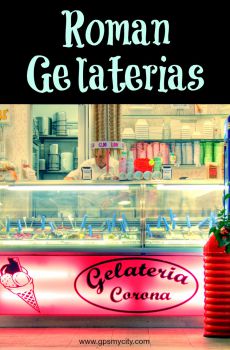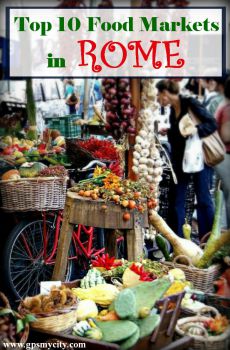
Domus Augusti (House of Augustus), Rome
The House of Augustus, also known as the Domus Augusti (not to be confused with the Domus Augustana), is located on the Palatine Hill. This residence is widely recognized as the primary home of Emperor Augustus (27 BC - AD 14).
Situated near the Hut of Romulus and other sites associated with the foundation of Rome, the House of Augustus is mentioned in various ancient literary sources. According to Suetonius, Augustus moved into the House of Quintus Hortensius on the Palatine Hill, departing from his original residence in the Roman Forum. Velleius reports that Augustus acquired the land and house of Hortensius between 41 and 40 BC. Shortly thereafter, the house was struck by lightning, leading Augustus to declare it as public property and dedicate a temple to Apollo Palatinus.
The original house suffered destruction in a fire in 3 AD but was subsequently rebuilt and designated as state property. The layout of the site revolves around two peristyles bordered by rooms. Between the two peristyles stands the Temple of Apollo Palatinus. Most of the preserved remains are located around Peristyle A (P2), as a significant portion of Peristyle B (P1) was destroyed by the later construction of the Palace of Domitian. The entire site covers an area of approximately 8,600 square meters.
The house was constructed on two terraces, utilizing the natural topography of the Palatine Hill. It served as the primary residence of Emperor Augustus, reflecting his status as Rome's first emperor and his significant contributions to the city's development and prosperity. The House of Augustus stands as a testament to the architectural grandeur and historical significance associated with the reign of Augustus and the early Roman Empire.
Situated near the Hut of Romulus and other sites associated with the foundation of Rome, the House of Augustus is mentioned in various ancient literary sources. According to Suetonius, Augustus moved into the House of Quintus Hortensius on the Palatine Hill, departing from his original residence in the Roman Forum. Velleius reports that Augustus acquired the land and house of Hortensius between 41 and 40 BC. Shortly thereafter, the house was struck by lightning, leading Augustus to declare it as public property and dedicate a temple to Apollo Palatinus.
The original house suffered destruction in a fire in 3 AD but was subsequently rebuilt and designated as state property. The layout of the site revolves around two peristyles bordered by rooms. Between the two peristyles stands the Temple of Apollo Palatinus. Most of the preserved remains are located around Peristyle A (P2), as a significant portion of Peristyle B (P1) was destroyed by the later construction of the Palace of Domitian. The entire site covers an area of approximately 8,600 square meters.
The house was constructed on two terraces, utilizing the natural topography of the Palatine Hill. It served as the primary residence of Emperor Augustus, reflecting his status as Rome's first emperor and his significant contributions to the city's development and prosperity. The House of Augustus stands as a testament to the architectural grandeur and historical significance associated with the reign of Augustus and the early Roman Empire.
Want to visit this sight? Check out these Self-Guided Walking Tours in Rome. Alternatively, you can download the mobile app "GPSmyCity: Walks in 1K+ Cities" from Apple App Store or Google Play Store. The app turns your mobile device to a personal tour guide and it works offline, so no data plan is needed when traveling abroad.
Domus Augusti (House of Augustus) on Map
Sight Name: Domus Augusti (House of Augustus)
Sight Location: Rome, Italy (See walking tours in Rome)
Sight Type: Attraction/Landmark
Guide(s) Containing This Sight:
Sight Location: Rome, Italy (See walking tours in Rome)
Sight Type: Attraction/Landmark
Guide(s) Containing This Sight:
Walking Tours in Rome, Italy
Create Your Own Walk in Rome
Creating your own self-guided walk in Rome is easy and fun. Choose the city attractions that you want to see and a walk route map will be created just for you. You can even set your hotel as the start point of the walk.
Spanish Steps to Trevi Fountain
An established tourist mecca, today's Rome is hardly imaginable without two of its much loved attractions – the Spanish Steps and the Trevi Fountain. Magnets for tourists as they are, these two sights are connected to a number of other, not less worthy of attention locations, such as the Fountain of the Longboat or Piazza Colonna and its centerpiece, the Column of Marcus Aurelius, to... view more
Tour Duration: 1 Hour(s)
Travel Distance: 2.0 Km or 1.2 Miles
Tour Duration: 1 Hour(s)
Travel Distance: 2.0 Km or 1.2 Miles
Trastevere Walking Tour
Heading down from the Vatican along the River Tiber, one is bound to find yet another city hidden within the city – Trastevere. This name translates literally to "across the Tiber". Indeed, crossing the picturesque Ponte Sisto (Sisto Bridge) to the west bank, you will find yourself in a charming neighborhood with a distinct character that sets it apart from any other part of Rome.
... view more
Tour Duration: 2 Hour(s)
Travel Distance: 2.9 Km or 1.8 Miles
... view more
Tour Duration: 2 Hour(s)
Travel Distance: 2.9 Km or 1.8 Miles
Food Tasting Walking Tour
Whether it’s a long lunch or a stop-off for an ice cream on an evening stroll, eating in Rome is a very social activity. Culinary traditions run deep here, and it may well be one of Italy’s most pleasurable cities in which to eat. Deli shops, prosciutterias, pizzerias, fornos (bakeries) and caffès are also very popular and offer a great alternative to a restaurant meal.
On this... view more
Tour Duration: 2 Hour(s)
Travel Distance: 2.7 Km or 1.7 Miles
On this... view more
Tour Duration: 2 Hour(s)
Travel Distance: 2.7 Km or 1.7 Miles
Roman Forum and Imperial Forums Walking Tour
t's a known fact that Rome wasn't built in a day. But since it was built, the city has stood the test of time and become "eternal." A popular proverb says, "all roads lead to Rome," but very few realize that, inside Rome itself, all roads lead to the Forum.
Indeed, the central hub of ancient Rome, the Roman Forum and the Imperial Forums once served as the... view more
Tour Duration: 3 Hour(s)
Travel Distance: 2.6 Km or 1.6 Miles
Indeed, the central hub of ancient Rome, the Roman Forum and the Imperial Forums once served as the... view more
Tour Duration: 3 Hour(s)
Travel Distance: 2.6 Km or 1.6 Miles
Vatican Walking Tour
Consisting of a walled enclave within the city of Rome, the Vatican is the world’s smallest sovereign state, as well as a symbol (and headquarters) of the Roman Catholic faith. Although only 44 hectares in surface, one is amazed by the vastness of this place and the sheer size of everything. When gazing around in all directions, you realize how much can be achieved by people working in faith for... view more
Tour Duration: 2 Hour(s)
Travel Distance: 3.4 Km or 2.1 Miles
Tour Duration: 2 Hour(s)
Travel Distance: 3.4 Km or 2.1 Miles
Hidden Art Treasures in Rome
Rome is one of the world's top living museums, replete with some of the most iconic pieces of art on the face of the planet. Famous artists, such as Michelangelo, Caravaggio, Raphael, Bernini, to mention but a few, had lived and worked here and left indelible marks in the city.
Needless to say that the abundance of masterpieces makes Rome crowded with tourists anxious to see them, causing... view more
Tour Duration: 2 Hour(s)
Travel Distance: 3.2 Km or 2 Miles
Needless to say that the abundance of masterpieces makes Rome crowded with tourists anxious to see them, causing... view more
Tour Duration: 2 Hour(s)
Travel Distance: 3.2 Km or 2 Miles
Useful Travel Guides for Planning Your Trip
Souvenirs Shopping: 15 Authentic Italian Things To Buy in Rome
Rome is the Eternal City and, as such, the list of gift options available here is countless. Whether it's something edible, drinkable, wearable or pleasing to the eye that you want - you will find it all here in abundance. However, if time or budget is the factor, perhaps you might want to...
17 Best Gelaterias in Rome Italy
For ice cream lovers and dabblers this guide is a treasure chest of Rome’s best gelato shops. There are gelaterias everywhere. Many visitors to Rome only have a few days to explore the city. You owe it to yourself to make the most of your time and find the gelato locals eat. Often the authentic...
10 Best Food Markets in Rome Italy
Of all the things Italy is most famous for (cars, music, fashion, movies, etc.), food is, undoubtedly, top of the list. Rome may well not be the whole Italy, but no Italy is whole without Rome... And the Romans, much as all their fellow-Italians, like it "fresco", hence the abundance of...









